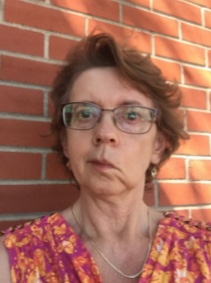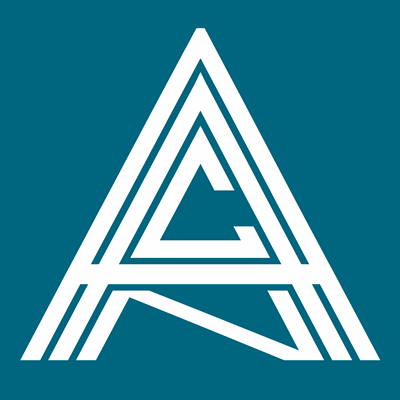Vestibular Rehabilitation is an exercise-based approach for treating people with dizziness and balance disorders that originated in the 1940’s. Since then there have been many advances in the assessment and treatment approaches for inner ear disorders. The inner ear is housed deep in the mastoid process behind the ear and it cannot be viewed with the otoscope. The key to assessment of the inner ear is by watching the eyes through special goggles that the patient wears. Eye movements when the head is stationary or moving will indicate what conditions are or are not present.
Some of the inner ear conditions that cause dizziness or balance disorders include Unilateral Vestibular Hypofunction (UVH), Bilateral Vestibular Hypofunction (BVH), Benign Paroxysmal Positional Vertigo (BPPV), Meniere’s Disease, Perilymph Fistulas and Acoustic Neuromas. This slow-growing tumour deep within the inner ear along the acoustic nerve causes a gradual loss of function of the inner ear, usually on one side of the head only. When one inner ear is sending less information to the brain than the opposite ear sends, the result is conflicting signals that the brain is trying to sort out and which, in my opinion, is the cause of the sensation called ‘dizziness’.
Dizziness is not a diagnosis, but a symptom that something is wrong, and it alone does not describe what a person might be experiencing. The meaning of ‘dizziness’ can be different for each person. Some people say they are dizzy when they are feeling off balance, unsteady, light-headedness, spinning, nausea, woozy, rocking and many other descriptions. And dizziness can be from many different causes other than the inner ear, including visual loss, sensory loss, mixed sensory losses, disease processes, neurological, psychological, pharmaceutical, and musculoskeletal systems. The neck may also cause dizziness, and this is called cervico-genic dizziness.
Treatment of the inner ear involves several different approaches and is individualized depending on the assessment findings:
-
Adaptation which involves retraining of the eye-head coordination so that the vision will be stable when the head is moving.
-
Habituation to improve tolerance to head movements.
-
Balance retraining for fall prevention and overall improved function
-
Substitution exercises for the body to learn to rely on the intact sensory systems when one or more of the other ones are not functioning.
-
Neck rehabilitation if needed for cervico-genic dizziness
-
Maneuvers to treat BPPV
-
Education and reassurance
Pre-AN Diagnosis and Pre-AN Surgery
Some of the early signs of an AN include dizziness and imbalance for which the person might seek an assessment by a Physical Therapist or Vestibular Therapist. During the assessment, there may be indicators of AN that the therapist may bring to the attention of the physician. Vestibular treatment at this point may help with the brain to learn to compensate for the loss of function, to retrain balance control and to improve the eye-head coordination. Before surgery is indicated, the person may already have complete loss of the vestibular function on the one side, and their brain may have already compensated for the loss, meaning that they have minimal balance concerns and minimal to no dizziness. If there is partial compensation, then they may be having ongoing difficulties.
Post AN Surgery
Following the surgical removal of the AN, the level of symptoms will be determined by the level of loss they had before surgery. As mentioned above, if there is complete loss then the post-surgical symptoms will be minimized, and the person should be able to return to full function fairly easily. If the loss was not complete prior to the surgery, then they will be experiencing a sudden loss of function and will have more difficulties and will require more vestibular therapy.
Can I have more than one condition at the same time?
It has been both my professional and personal experience that people can have more than one condition happening at the same time. This makes the diagnosis more complicated but a systematic and thorough assessment would help discern what is involved. In my years of experience, I found that the neck is a key component for many people and some simple exercises and stretches can make a tremendous improvement for the cervicogenic dizziness. People can also have unilateral vestibular loss and BPPV which again can be seen with a complete assessment and both can be treated effectively. As well people may have weakness in their lower body or loss of sensation in the feet, which will affect their balance. Anxiety in any of these conditions will, in my opinion, magnify the symptoms they are feeling and may limit their willingness to participate in the rehabilitation process.
Who should I see?
After seeing your doctor to rule out any medical concerns that may be contributing to your symptoms, an assessment by a “Vestibular Therapist” would be of benefit. Vestibular therapists typically have a background in Physical Therapy, Occupational Therapy, Audiology, or medicine (ENT). There are various levels of training from one or two-day weekend courses to more intensive 5-day training in Canada and the US. As well, the level of prior experience or training the therapist has will vary. Some courses have a competency process of testing the practical skills and written knowledge and some don’t. There is no set standard of entry level practice for vestibular rehabilitation, but in my opinion, a vestibular assessment that does not use the goggles will be not be complete.
I wish everyone with AN to have a dizzy free and balanced life!

B.Sc.P.T., B.Sc.Anat
About the Author
Robynne’s post-graduate training includes advanced course work in Vestibular Rehabilitation in Canada and the USA. Additionally, she has completed FallProof training, which provides her excellent fall prevention skills. She also has experience and training in orthopedics, neurology, paediatrics, arthritic conditions (including osteoporosis) and chronic pain.
Robynne who ironically was treated for an acoustic neuroma in 2011 has specialized in balance and dizziness concerns including: vestibular neuritis, BPPV, BPV, Vertigo, imbalance, unsteadiness, cervicogenic dizziness, Meniere’s, and other inner ear concerns.
Assisting clients in restoring their balance allows them to return to previous activities of daily living without dizziness and fear of falling. Robynne is now offering professional training on Vestibular Rehabilitation for allied health professionals through introductory to advanced level seminars, workshops and courses. You can email her at saskbalance@sasktel. netwww.saskbalance.com
